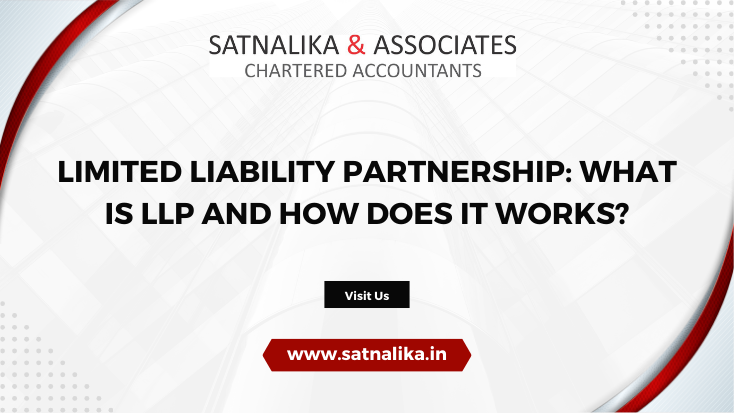Limited Liability Partnership: What is LLP and How does It Works?
General NewsPosted by Surender on 06 Dec 2023 |
Share: Facebook | Twitter | Whatsapp | Linkedin

A Limited Liability Partnership (LLP) is a legal business structure that combines elements of both a traditional partnership and a corporation. It is designed to provide the benefits of limited liability to its partners while allowing them to participate in the management of the business. Here's a breakdown of what an LLP is and how it works:
What is an LLP?
- Limited Liability: One of the primary features of an LLP is that it offers limited liability protection to its partners. This means that the personal assets of the partners are protected, and their liability is limited to their investment in the LLP. In the event of business debts or legal issues, the personal assets of the partners are generally shielded from creditors.
- Separate Legal Entity: An LLP is considered a separate legal entity from its partners. This separation allows the LLP to own assets, enter into contracts, and be held liable for its actions independently of its partners. It can sue and be sued in its own name.
- Flexible Management: Unlike a traditional corporation where there is a strict hierarchy, an LLP typically allows its partners to participate in the management and decision-making process. Partners have the freedom to determine their roles and responsibilities within the LLP.
- Pass-Through Taxation: LLPs typically enjoy pass-through taxation, which means that profits and losses of the LLP are passed through to the individual partners. The LLP itself does not pay income tax; instead, the partners report their share of the income on their personal tax returns.
How Does an LLP Work?
- Formation: To establish an LLP, partners need to file the necessary documents with the appropriate government authority in their jurisdiction. This typically involves registering the LLP's name, providing details of the partners, and creating an LLP agreement.
- LLP Agreement: The LLP agreement is a crucial document that outlines the rights, responsibilities, and roles of each partner within the LLP. It also defines how profits and losses will be allocated among the partners, as well as the procedures for admitting new partners or withdrawing existing ones.
- Limited Liability: Partners in an LLP enjoy limited liability protection, which means their personal assets are protected from business debts and liabilities. This is a key advantage over general partnerships, where partners are personally liable for the partnership's obligations.
- Management: The management structure of an LLP can vary depending on the agreement among the partners. Some LLPs have designated managing partners responsible for day-to-day operations, while others may distribute management responsibilities among all partners.
- Taxation: As mentioned earlier, LLPs typically benefit from pass-through taxation. Profits and losses are allocated to individual partners based on their ownership percentages, and each partner reports their share on their personal tax returns. This avoids double taxation, which occurs in some corporate structures.
- Compliance: LLPs must comply with regulatory and reporting requirements in their jurisdiction. This may include filing annual reports, maintaining financial records, and adhering to any specific industry regulations.
- Transferability: The transfer of ownership or partnership interests in an LLP is typically governed by the LLP agreement. It may require the consent of existing partners or follow a predefined process for admitting new partners.
- Dissolution: LLPs can be dissolved voluntarily by the partners, according to the terms outlined in the LLP agreement. Additionally, dissolution may occur due to bankruptcy, legal issues, or the death of a partner. The assets of the LLP are typically used to settle any outstanding debts and liabilities before distributing the remaining assets to the partners.
In summary, a Limited Liability Partnership (LLP) offers the benefits of limited liability protection to its partners while providing flexibility in management and pass-through taxation. It's a popular choice for professionals, such as lawyers, accountants, and consultants, as well as small to medium-sized businesses looking for a balance between liability protection and operational control. However, the specific regulations and requirements governing LLPs can vary by jurisdiction, so it's important to consult with legal and financial professionals when considering this business structure.
Download PDF
Categories
Request for News Updates!!!
Quick Links
Popular Links
Get In Touch
Unit 423, 4th Floor, Vipul Trade
Centre, Sector 48, Sohna Road,
Gurugram – 122018, Haryana, India
Dhiraj@satnalika.in
+91 88260 16982
© Satnalika & Associates. All Rights Reserved.